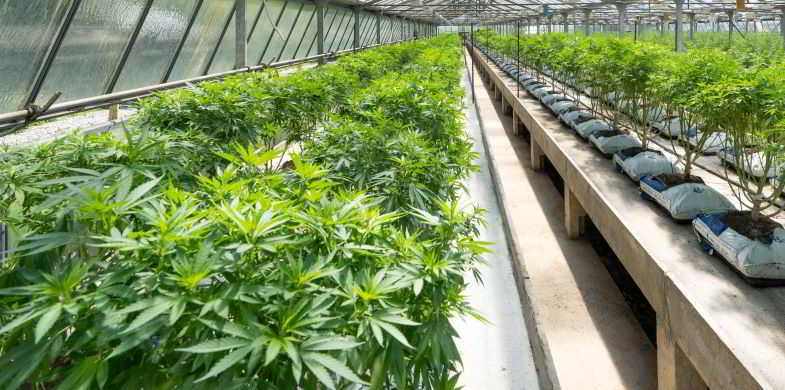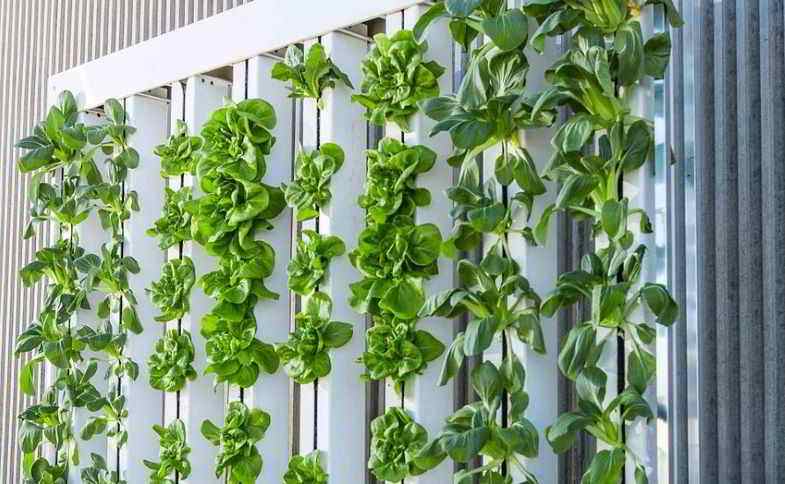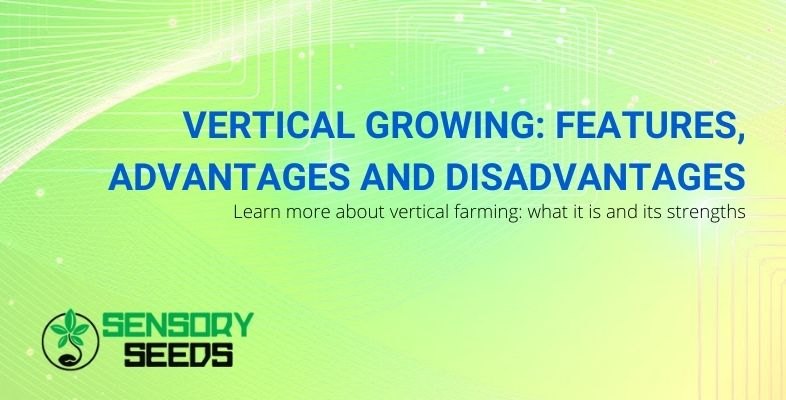Modified on: 20/09/2022
Learn more about vertical farming: what it is and its strengths
The world of agriculture is constantly developing. We are constantly trying to find new cultivation methods to obtain quality products and higher yields.
In particular, we know that growing space can make all the difference in the agricultural sector.
In this article on our SensorySeeds blog, we would like to tell you about an innovative technique with a lot of success: vertical cultivation, which originated in the United States a few years ago.
In the following paragraphs, you will find out what it is, its advantages and disadvantages, and whether it can also be used in the hemp sector.
Let’s get started.


What is vertical growing?
The world of agriculture is constantly evolving. From time to time, we hear about new innovative techniques to increase plants’ yield or make better use of space, and one of these is vertical farming.
This is a method of growing plants in closed greenhouses, whereby the plants are arranged on several levels in height. Naturally, these greenhouses are air-conditioned, automated and equipped with large lighting systems.
Vertical cultivation aims to achieve an excellent yield in a minimal space and, more generally, to overcome the limitations of horizontal cultivation.
But let’s go into detail.
Read also: Cannabis sativa and online sales: helpful information
Vertical growing: advantages and disadvantages
Vertical growing is a practice that is perfectly suited to the cultivation of many plant species. It is used for strawberries, melons, courgettes, and even hemp plants (dwarf and slightly larger auto-flowering plants).
To understand in detail the main advantages of this cultivation technique, we want to highlight the limitations of the horizontal cultivation technique.
We know that in traditional cultivation, the plants are placed next to each other and on the same level. However, due to the formation of branches and leaves during their growth, the light cannot reach them all equally. To overcome this problem, those with a lot of space tend to space the plants as far apart as possible, but not everyone has this option.
A lack of space and light means slower growth and lower yields.
When you opt for vertical growing, this does not happen.
First, consider that this method allows you to double the growing space. The plants are distributed on several levels in the walls of square or hexagonal structures, positioned around a central light.
This organisation of the space means that the light is absorbed by the plants more evenly, and not only that, it also saves on energy costs.
And the disadvantages?
Among the disadvantages of vertical growing is the initial investment. Today, the cost of structures for this farming technique is still very high.
Another disadvantage is that there may be difficulties in treating higher plants.
Even if you opt for vertical farming, you have to make sure that you cut the parts of the plant that are no longer productive and that you periodically turn each plant so that it can absorb the same level of light on each side. And then, you know, sometimes you have to deal with diseases and pests.
However, the impressive production yields that this farming technique can offer are worth all the effort!


Growing cannabis vertically
As mentioned earlier, the vertical growing technique can also be applied to cannabis.
In vertical cultivation, it is ideal that each plant does not extend beyond its allocated space. For this reason, dwarf auto-flowering plants and fast-flowering feminised plants are the most suitable. On the other hand, Sativa-oriented genetics tend to grow a little too large, but some people choose them anyway.
Although vertical farming allows you to grow many more plants than the classic horizontal technique, the space between one hemp plant and the next must be carefully calculated.
Air circulation must be considered and the operations necessary for the assembly and disassembly of pipes and trays.
Especially if you opt for vertical hydroponic cultivation, you will need to install a large and sophisticated irrigation system, which must be kept clean at all times to avoid the accumulation of mineral salts or the proliferation of bacteria.
Read also: Cannabis sativa plant: characteristics, curiosities and cultivation
To conclude
As we have seen, although it is expensive at first, vertical farming allows you to multiply the yield of crops in closed greenhouses and is suitable for many plant species.
We hope that this short article has satisfied your curiosity about this technique, and invite you to visit our SensorySeeds store.
Choose from our wide range of quality weed seeds to complete your collection: feminized seeds, auto flower seeds, fast growing weed seeds, there is something for every taste!
We look forward to seeing you on Sensoryseeds.com!









